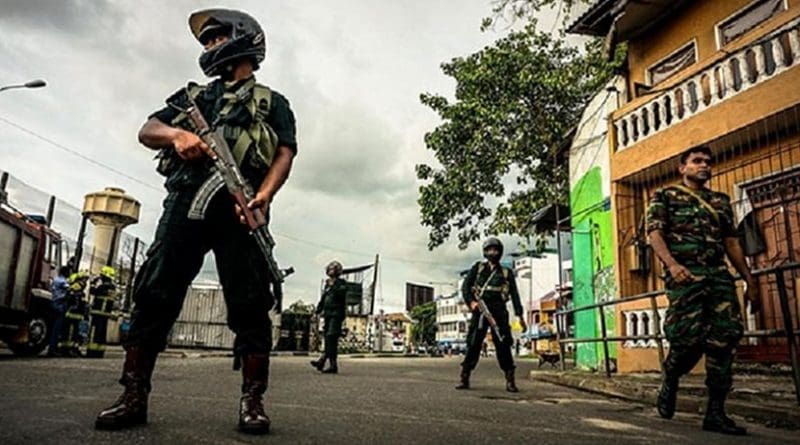Deadly Attacks Are An Echo From Country’s Violent Past – Analysis
The horrific attacks in Sri Lanka on Easter Sunday, which killed hundreds of innocents, are a demonstration of how tactics and techniques employed in this island nation decades ago returned to haunt a shocked and broken government thanks to a complete collapse of counterterrorism capability or capacity.
Hate preacher Zahran Hashim, head of the National Thowheed Jamath group that is being blamed for the attacks, developed a reputation as a preacher who “copied” Daesh propaganda videos to enhance his posts via the pro-Daesh Al-Ghuraba media channel, which used Facebook and YouTube as its primary platforms. In the videos, he often advocated the notion that only Muslims are acceptable rulers and routinely attacked Christians, Buddhists and Hindus with hateful diatribes. Hashim’s plan for simultaneous suicide bombings was the devastating result in a country that has a long history of suicide attacks.
Hashim’s hate is wrapped up in a key local factor. In the past 30 years, the South Asia, Caucasus and Middle East regions have seen an increase in the number of theaters of terrorism and insurgency. Attacks have become bloodier, and terrorist campaigns more effective in achieving their aims. Trends show that even though certain groups are unrelated and no formal links are shared, terror outfits have learned from each other’s past terrorist acts and experiences.
Sri Lanka’s Liberation Tigers of Tamil Eelam (Tamil Tigers or LTTE) employed tactics and techniques, including the use of suicide bombings, that set it apart from other terrorist groups. Up to 200 suicide attacks between 1987 and the end of the civil war in 2009 were reported to have been the work of the LTTE. Their most high-profile victims were former Indian leader Rajiv Gandhi in 1991 and Sri Lankan President Ranasinghe Premadasa in 1993.
The LTTE often ambushed and harassed Sri Lankan troops, using small arms and heavier weapons, artillery and even aerial bombings. Mortar attacks and sniper fire also helped to pin down the Sri Lankan armed forces. The LTTE often attacked government troops in waves, a tactic that proved to be hugely successful. Once the enemy was swarmed, suicide bombers would engage the target, causing panic.
The LTTE attacked targets of national significance to Sri Lanka and were often indiscriminate in who was attacked at these sites. National symbols such as the president, the central bank and Colombo’s World Trade Center were targeted, with most of the casualties being Sinhalese.
The conflict between the LTTE and Sri Lanka’s forces dragged the country into a long-lasting civil war, which involved more than 20 years of intermittent conflict. Government troops were the group’s main target, but it also struck at civilians in urban areas. It seems that the Easter attacks echo this type of tactic.
The evolution of terrorist tactics and techniques could be seen in the multi-faceted attack on Mumbai in 2008. The approach adopted by the Mumbai attackers showed clear similarities to that of other related groups. Thus, the Mumbai attacks can easily be compared to the massacres performed by the LTTE.
Public spaces and national landmarks are easy targets that terrorists increasingly are looking to attack. Mumbai was not the first time a transport hub was attacked; in fact, it is becoming common for attacks to target sites such as train stations. This tactical trend obviously jumped to Europe and continental Asia as time passed, as demonstrated by the dozens of bloody attacks on each continent.
Hashim’s ability to link his group to terrorist tactics of the past signals that Daesh’s techniques are still evolving and being perfected, with other groups watching carefully.
The likelihood that Hashim picked up tactics from Sri Lanka’s violent past is quite high. In a sense, the Easter attacks were a homecoming for terrorist tactics.

